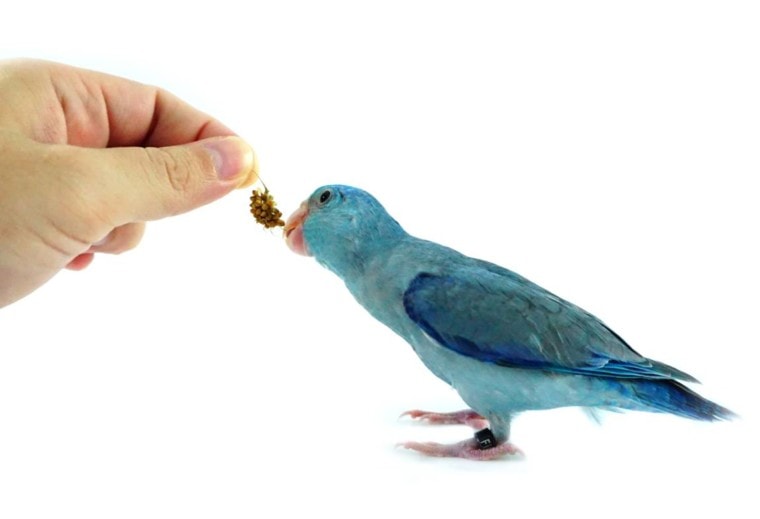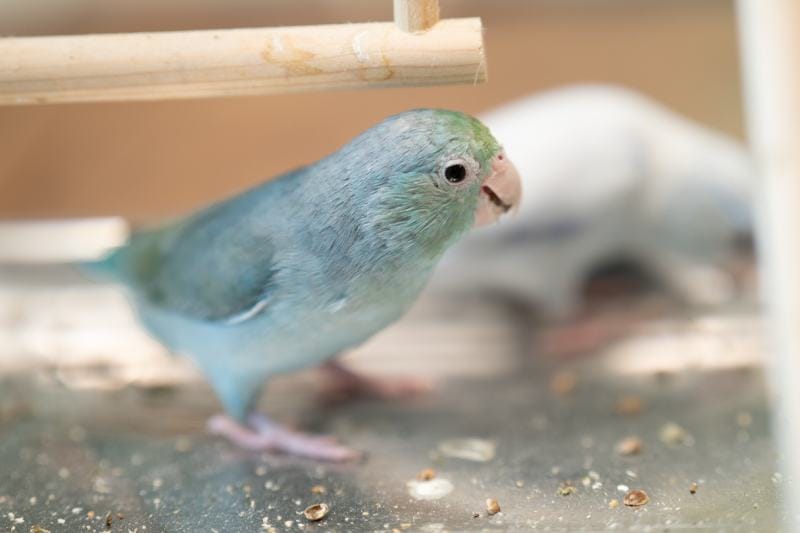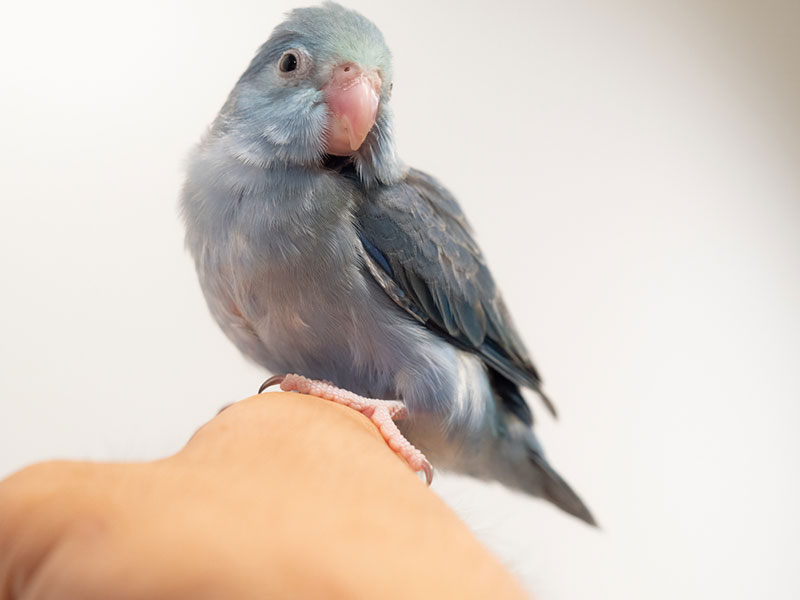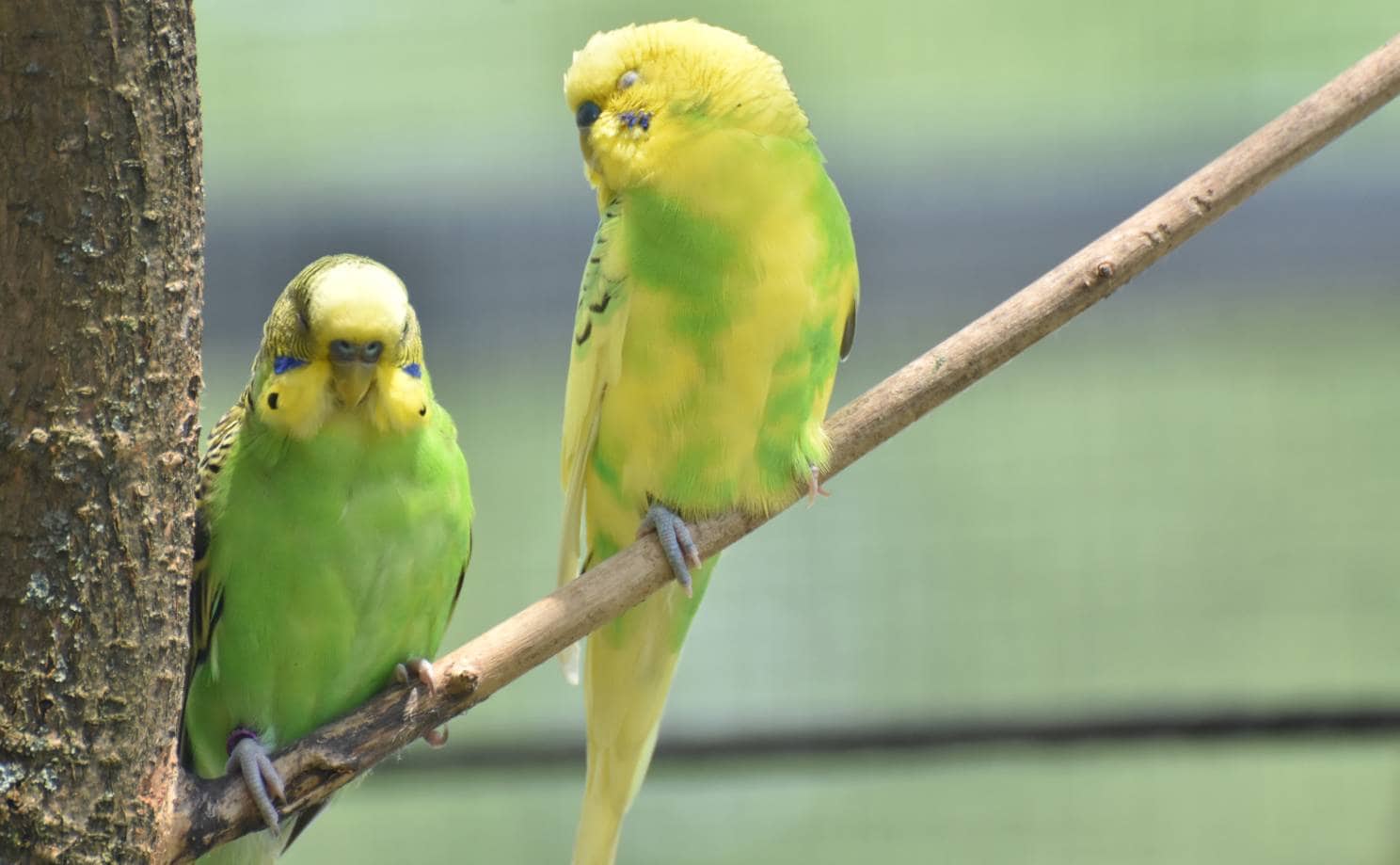
If you just brought home a new parrotlet, you may be wondering how to get your bird to bond with you. After all, birds are often shy at first and may need some time to warm up to you. In this article, we will discuss some tips that you can try that will help you build a relationship with your parrotlet.
 6 Tips for Bonding With Your Parrotlet
6 Tips for Bonding With Your Parrotlet
1. Talk to your parrotlet at bedtime.
When your parrotlet is getting ready to go to sleep at night, spend some time talking to it before you cover its cage. As your bird is winding down for the night, it will have a better attention span than it might in the middle of the day. Over time, your bird will become more accustomed to your presence and voice and will come to associate you with feelings of comfort and relaxation.
Just as humans bond over food, you will find that your parrotlet will enjoy a shared meal. For birds, sharing food is not only a social act, but it is a sign of care and affection. Like other bird species, wild parrotlets regurgitate their food to their mate or young ones in the wild.
You don’t need to regurgitate your food for your parrotlet, but even offering something off your own plate will be interpreted as a gesture of love. Be mindful when giving your parrotlet some of your own food, though; stick to fresh fruits and leafy greens. Remember, parrotlets are lactose intolerant, so don’t offer cheese, and they should never eat anything cooked in oil.

3. Try grooming your bird.
Grooming is another great show of affection that mimics the behaviors of wild birds. Before you try grooming your parrotlet, though, you should first make sure that it is comfortable with being handled. Otherwise, your plan of bonding with your parrotlet will likely backfire.
If you have some experience handling and petting your parrotlet, you might want to try scratching its head to see how it reacts. If your parrotlet seems receptive, you could try to help it remove a few pinfeathers that it may be unable to reach. Eventually, you can even start bringing your bird into the shower with you!
4. Use music to get your parrotlet dancing.
Like humans, birds love music. You may find your parrotlet whistling or singing from time to time. One great way to strengthen your bond is to sing and dance with your bird. Try singing to it or turning on the radio to get your parrotlet in the mood for dancing. Birds rely heavily on body language for communication, so the act of dancing together will help cement your bond.

5. Offer plenty of treats.
If you want your parrotlet to warm up to you, it can’t hurt to bribe it from time to time. Even the shyest birds won’t be able to resist a delicious snack. Keep track of the treats your bird likes best and offer them up when you want to get it to come out of its cage. Just make sure not to overdo it; it’s important for your parrotlet to get a nutritionally balanced diet, and if it’s too full on treats, it won’t want to eat its formulated food.
Finally, make sure you are building time into your schedule to socialize with your parrotlet. Parrotlets need at least 1–2 hours of out-of-cage time to get adequate exercise. Join in the fun by tossing around your parrotlet’s favorite toy or playing fetch.
For many birds, it can take some time to warm up to their new owners, so if your bird seems timid at first, work your way up to these playdates. Start by spending small increments of time sitting with and talking to your parrotlet. Eventually, as it becomes more comfortable around you, you can increase the amount of time you spend together.

 Conclusion
Conclusion
Building a relationship with a new parrotlet can take time. Don’t expect your bird to be excited to see you as soon as you bring it home. Remember that it’s normal for parrotlets to be shy or scared at first; imagine how it would feel to move to an entirely new environment! However, with time and patience, you can create a wonderful bond with your parrotlet.
Related Reads:
Featured Image Credit by Ploychan Lompong, Shutterstock
 6 Tips for Bonding With Your Parrotlet
6 Tips for Bonding With Your Parrotlet





